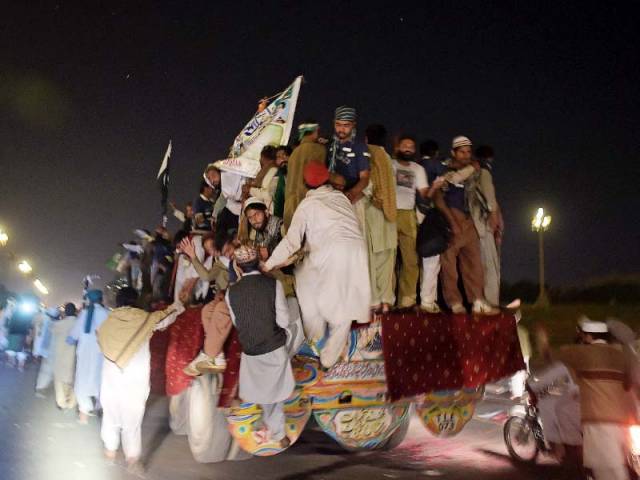
Why are Lahore Fort’s walls being used as urinals?
I was disgusted. This sight was to set the tone for the rest of my walk around the fort.
Nations, tribes and even individuals have claims to heritage. Heritage helps us define our place in the multitude of ideas that surround us. This view, however, is simplistic and uni-directional to say the least. The notion of a collective heritage and what we hold onto in the present day and age is an iterative one.
It means that along with the mighty forts, castles, mosques, literature and practices of the past, we as present day inhabitants of a place can build on the legacy from the past. This building on the past is yet another dangerous term. The experiments in this vein can be fruitful or they can go dangerously wrong as I will illustrate as follows.
Coincidently, I revisited the Lahore Fort last week. What followed was an extension of the initial coincidence, as I am sure most of the audience would agree is an out of the norm or even, an extraordinary occurrence.
As I entered the Lahore Fort, accompanied by my friend, through the gate which was the entrance for elephants during the fort’s prime, an audacious act left me and my accomplice frozen in our steps. A boy of about seven or eight, who was with a group of caretakers and friends, pulled down his pants, raised his head towards the roof of the archway he was standing under and sprayed on the fort’s wall with all his young might, a surge of confidence, an organic discharge, which left me in a frenzied state of awe and repulsion.
I was disgusted.
Not at the boy’s tenacity at relieving himself in public (because that is a common phenomenon in Pakistan, but a topic for another time), but I was disgusted at the particular moment in time the Lahore Fort existed in; the same fort which was once a pantheon of kings both alive and dead, a bastion of Mughal supremacy and intellectual prowess in both arts and culture.
Getting over this manic episode triggered by that solemn boy, I ventured further into the Fort. In an interstice right outside Sheesh Mahal, I stopped, shocked, as I found the words ‘Jabbar’ in Urdu carved onto the wall bearing a colourful Mughal geometric pattern. This sight was to set the tone for the rest of my walk around the fort. And the further I progressed, the more a nauseating sense of estrangement overtook me as I constantly encountered similar writings of deliberate damage and vandalism on the walls.
 In an interstice right outside Sheesh Mahal, I stopped, shocked, as I found the words ‘Jabbar’ in Urdu carved onto the wall bearing a colourful Mughal geometric pattern.
In an interstice right outside Sheesh Mahal, I stopped, shocked, as I found the words ‘Jabbar’ in Urdu carved onto the wall bearing a colourful Mughal geometric pattern.Even after 69 years of independence, Pakistan still does not have a cultural policy. But that is not the point here.
An agenda, policy or a strategy for the preservation of heritage, culture, values, social mores, traditions, ideas and what not is not a requisite to having the fundamental sense of how to treat a space that precedes your current existence in time.
 Even after 69 years of independence, Pakistan still does not have a cultural policy. But that is not the point here.
Even after 69 years of independence, Pakistan still does not have a cultural policy. But that is not the point here. Lahore Fort is not what we are as Pakistanis.
Lahore Fort is not what we are as Pakistanis. Whatever our actions maybe towards these monuments, they may or may not stand in a few hundred years.
Whatever our actions maybe towards these monuments, they may or may not stand in a few hundred years.Lahore Fort is not what we are as Pakistanis.
It does not even represent us.
It precedes us.
Its intellectual and aesthetic traditions go beyond our current selves.
Then, what responsibility do we have to a space that does not represent us?
None, whatsoever.
The point to be realised by the certain Jabbar (besides thinking about using his pen on a paper next time) and the boy who so eloquently presented our condition as a nation, is that these heritage sites are just witnessing this passing throng of people that is the Pakistanis.
Whatever our actions maybe towards these monuments, they may or may not stand in a few hundred years. They may or may not be there to represent us as they only stay erect today to showcase the marvels of the Mughal era. Our claims to this heritage then are farcical, because, if Lahore Fort’s walls are akin to a urinal for a boy then perhaps we should claim our culture and heritage elsewhere.
 Our claims to this heritage then are farcical, because, if Lahore Fort’s walls are akin to a urinal for a boy then perhaps we should claim our culture and heritage elsewhere.
Our claims to this heritage then are farcical, because, if Lahore Fort’s walls are akin to a urinal for a boy then perhaps we should claim our culture and heritage elsewhere. Do we align ourselves with the Jabbars of our time or the Mughals who have given us the prospect of a chance association?
Do we align ourselves with the Jabbars of our time or the Mughals who have given us the prospect of a chance association?The Mughals built the Lahore Fort and then Jabbar came and etched his mark on the structure, turning the glorious structure into a tombstone; a memorial for our collective sense of pride that claims the very culture we micturate on.
I will not tread into the territory of prescriptive heritage discourse (such as: we should preserve this monument as this is our identity etc.) because that reduces a complex issue to easily digestible formats of dialogue. It is perhaps the hardest of dialogues that we can have with others and most importantly with ourselves that might breed some viable progress in our development as a collective.
The question then is; what will represent us as a collective (who inhabited this piece of land from 1947 onwards) a few hundred years from now? Do we align ourselves with the Jabbars of our time or the Mughals who have given us the prospect of a chance association?
[poll id="483"]


COMMENTS (9)
Comments are moderated and generally will be posted if they are on-topic and not abusive.
For more information, please see our Comments FAQ